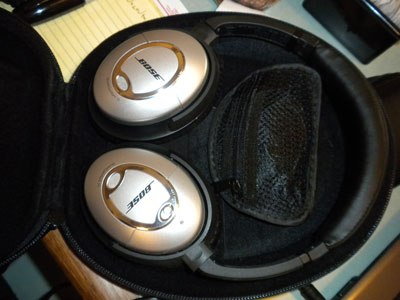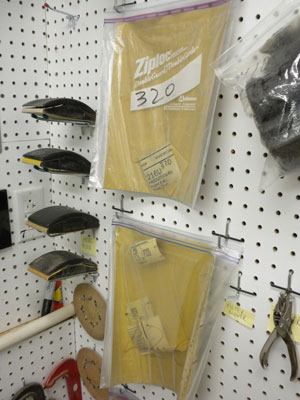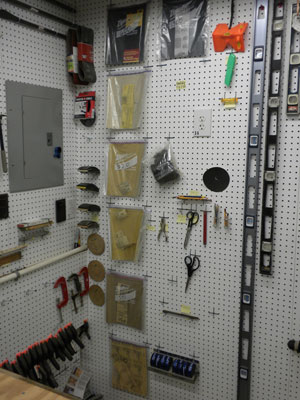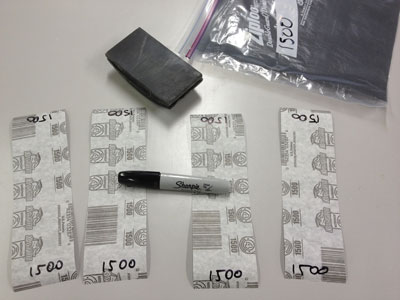Tips From Sticks-In-The-Mud Woodshop
by Jim Randolph
Long Beach, Mississippi
Click on any picture to see a larger version.
Welcome to "Tips From Sticks-In-The-Mud Woodshop." I am a hobbyist, not a professional, someone who loves woodworking, just like you do. I have found some better ways to accomplish tasks in the workshop and look forward to sharing those with you each month, as well as hearing your problem-solving ideas.
Tip #1
Even though this month's tip may seem to conflict with my usually-cheap ways, the fact is my outlook on money is that I should get as much for it as I can. When I see an expensive item that can also deliver value, I look at it more closely to see if it can fit into my plan. Take Festool equipment, for example. Their tools cost a lot, but, my Heavens! Look what they can do for you!
My wife, Brenda, is a mixed-media artist and looks at the world with the right side of her brain. "Spending money" and "impediments" are not words that will ever appear together in one of her sentences. Frugality is not a right-brain concept. She and I share a passion for music. So, when she bought a pair of Bose Noise-Cancelling Headphones a few years ago, she showed me the invoice, scraped me off the ceiling, and invited me to listen to one of my favorite songs, Angelsea by Cat Stevens, using my iPhone and her new headphones.

|
|
$300 in a very small package! However, for someone who wants to protect his hearing
and for whom faithful music reproduction is important, it's an excellent purchase.
|
One song was all it took! Still, if I were going to justify the several-hundred-dollar purchase, there would have to be a practical side to the argument.
The only hearing protection I had at the time was a headset with a built-in AM-FM radio. Shortly after I ordered it the same company came out with a model that provided MP3 input, also. I actually wrote to the company and asked them if they would take my AM-FM model as a trade-up deal. Not surprisingly, they didn't reply. So, I made do with that until Brenda had me try her Bose headphones.
I always used hearing protection when operating the leaf blower, string trimmer, lawn mower, shop vacuum and radial arm saw (the stock 12" Delta blade "sings" an ear-piercing tune). I convinced Brenda to loan me her Bose for a trial run with the leaf blower, and immediately knew I had to begin saving so I could take the plunge. Not only could I listen to the music and podcasts I loved, but using the iPhone, I would be alerted right through the Bose when I got a phone call, timer, text message or other alert.
I still use the Bose headphones now when I work in the yard, but my favorite application of them is when I'm sanding. I find the spoken word (think podcast or audiobook) makes the time go fastest, but anything that holds your attention will make this boring chore less painful. You can save up for them or put them on you Santa Claus list, but if you love beautiful music and value your hearing, Bose Noise-Cancelling Headphones are a premium item worth the cost.
CAUTION: Bose Noise-Cancelling Headphones are not wireless. That means they are safe when hand-sanding or random-orbit sanding. However, the cord that connects your MP3 source to the headphones could present a real danger if it became entangled in a belt sander or rotary sander. User beware.
OPINION ALERT: This is my two-cents-worth on whether to spring for another $50.00 for the rechargeable battery: don't. It is a proprietary battery, and we know what happens to rechargeable batteries when they don't hold a charge anymore: you are stuck buying another one from Bose for $18. And, when/if the charger dies, there's another $40. Modern alkaline batteries are terrific, and great rechargeable AAAs are available from several reputable manufacturers.
Tip #2
No Southern-fried Southern boy wants to be called a Yankee, but we share the characteristics of shrewdness and thrift. Thus, each month we include a money-saving tip. It's OK if you call me "cheap."
A sheet of sandpaper, 9"x11", fits perfectly into a one-gallon zipper-locking bag, which can be labeled and hung on pegs. Use a paper hole punch "above" the zipper.

|
Having your sandpaper in zipper-locking bags makes them handy and organized. No searching for a certain
size. Notice the pre-marked scrap ends, ready for use!
|
The bag also makes a convenient place for
pre-marked ends of the same grit
to reside until you are ready for them.

|
All sanding supplies are in one corner of the shop together, including belts, steel wool and sanding
blocks, stored in successive order of grits. Even the rasps are right there.
|
If you use one of your
previously-used zipper-lock bags
you've saved twice!

|
Pre-marking ends of sandpaper destined for a sanding block allows you to utilize those pristine
ends and know the grit without having to guess, or read a bar code.
|
Jim Randolph is a veterinarian in Long Beach, Mississippi. His earlier careers as lawn mower, dairy farmer, automobile mechanic, microwave communications electronics instructor and journeyman carpenter all influence his approach to woodworking. His favorite projects are furniture built for his wife, Brenda, and for their children and grandchildren. His and Brenda's home, nicknamed Sticks-In-The-Mud, is built on pilings (sticks) near the wetlands (mud) on a bayou off Jourdan River. His shop is in the lower level of their home. Questions and comments on woodworking may be sent to
DrRandolph@MyPetsDoctor.com
. Questions about pet care should be directed to his blog on pet care,
www.MyPetsDoctor.com
. We regret that, because of high volume, not all inquiries can be answered personally.
Return to
Wood News
front page


